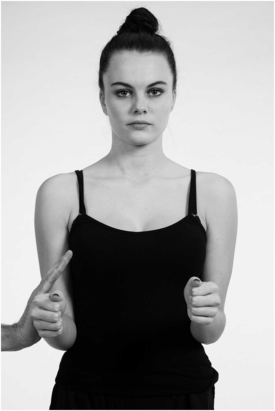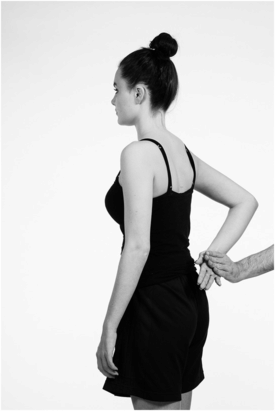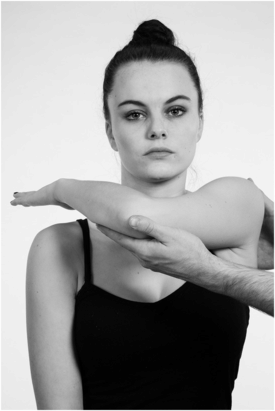Rationale: Assesses the patient for acute tears or tendinopathy and aids shoulder stability.
Technique: This rotator cuff muscle is assessed with the ‘empty can test’. This involves abducting the shoulder to 90°, forward flexion of 30° and the thumbs pointing towards the floor as if pouring out a drink can. Downward pressure is applied by the examiner.
Positive test: Reproduction of the patient’s discomfort or weakness indicates pathology.
How are the infraspinatus and teres minor muscles tested?

Technique: The patient is asked to stand in a ‘ski pole’ position with the elbows tucked in and flexed to 90°, and the forearms in neutral rotation. Resisted external rotation tests both infraspinatus and teres minor.
Positive test: Reproduction of the patient’s discomfort or weakness indicates pathology.
How is the subscapularis muscle tested?

Rationale: Assesses the patient for acute tears or tendinopathy and aids shoulder stability.
Technique: Gerber’s lift-off test also tests subscapularis. The patient places the dorsum of the hand on the gluteal region and lifts the hand off the back against resistance.
Positive test: Reproduction of the patient’s discomfort or weakness indicates pathology.
How is the acromioclavicular joint tested?*

Rationale: Identifies a patient with acute ACJ injury or arthritis.
Technique: The ‘scarf test’, as its name suggests, involves flexing the shoulder and adducting the arm across the contralateral shoulder, as if wrapping a scarf around the neck. A further test involves interlocking the fingers of both hands at chest height and asking the patient to pull them apart.
Positive test: Reproduction of the patient’s discomfort.
How are the shoulder impingement tests performed?*
Rationale: Perform this test with any patient presenting with a painful arc. It assesses abutment of the greater tuberosity of the humerus against the under surface of the acromion.
Stay updated, free articles. Join our Telegram channel

Full access? Get Clinical Tree


